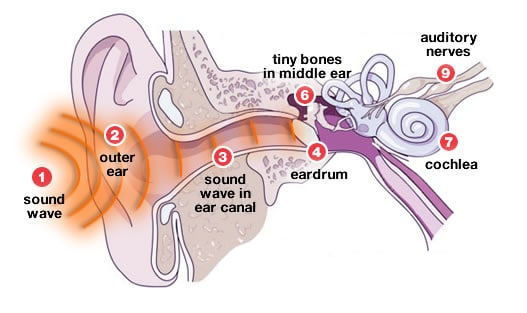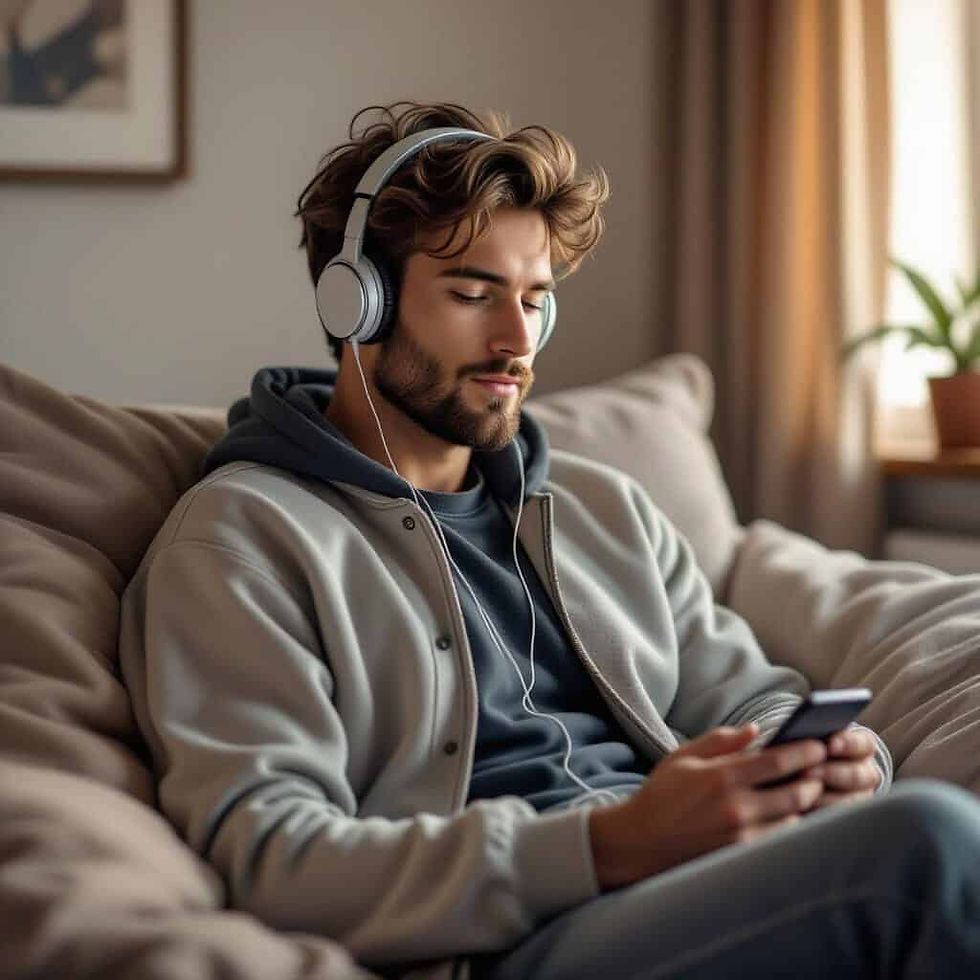Workness Series 04: Protect Your Ears – Keep the Noise From Stealing Your Focus
- Catherine Manin
- Aug 18, 2025
- 4 min read
Take one minute right now to focus on the sounds around you.
Can you hear anything?
When was the last time you remember being in complete silence?
Whether you’re working from home or in a busy office, hearing is one of your most important senses — and it deserves protection.
Yet without realizing it, you might be exposing your ears to a surprising amount of potentially damaging noise every single day, not only at work but also in your personal life.
Think about it: ringing phones, constant pings, Zoom calls, office chatter, traffic outside your window, the hum of appliances, music or podcasts playing in your headphones — your ears are under constant pressure to process sound.
Over time, this can lead to hearing fatigue — much like eye strain or back tension — affecting your focus, mood, and overall energy.
The first step in protecting your hearing is learning to recognize potentially dangerous noise levels.
Once you know what’s risky, you can take simple, smart steps to avoid damage and keep your hearing strong for years to come.
This quick Workness guide will help you tune into your sound environment and protect your hearing without disconnecting from your work.

How Hearing Works (and How Noise Damages Your Ears)
The mechanics of hearing
Sound is made of invisible vibrations — sound waves — that travel through the air.
Your outer ear catches these waves and funnels them into your ear canal, where they make your eardrum vibrate.
This movement sets three tiny bones in your middle ear in motion, amplifying the sound before sending it into the fluid-filled cochlea.
Inside the cochlea are thousands of delicate hair cells that react to these vibrations.
They convert them into electrical signals that travel through the auditory nerve to your brain, where you perceive sound.

The silent danger
When exposed to loud or prolonged noise, these fragile hair cells can break or die.
Unlike most cells in your body, they don’t regenerate — so any hearing damage is permanent.
It’s also a myth that only painful noise causes harm; your ears can be damaged long before you feel discomfort.
Quick Self-Check: How’s your hearing?
Try having a conversation in a noisy environment. Do you struggle?
Below are descriptions of hearing loss levels that might match what you experience:
Mild: Soft noises are hard to hear; speech is difficult in noisy spaces.
Moderate: Trouble hearing soft and moderate sounds; background noise makes speech hard to follow.
Severe: Conversations need to be loud; group talks are exhausting.
Profound: Only very loud sounds are heard; hearing aids or implants are essential for communication.
Don’t wait
On average, people live with hearing loss for nearly 10 years before seeking help.
Untreated hearing loss can lead to concentration problems, stress, headaches, low self-esteem, and even depression.
If you notice any early signs, get your hearing checked.
An undetected and untreated hearing loss only gets worse over time.

The Noise Danger Zone

The risk to your ears depends on how loud and how long.
Experts agree: prolonged exposure to sound above 85 decibels (dB) can cause damage.
The noise thermometer
105 dB (chainsaw, loud concert) → damage possible after 15 minutes a week.
90 dB (lawnmower, busy traffic) → damage possible after hours each day.
120 dB (rock concert, siren) → damage possible in minutes.

Source : https://soundmeter.coderobo.org/
The safe conversation test
If you can’t hold a conversation at arm’s length without raising your voice, the noise level is probably unsafe.
Five Simple Ways to Protect Your Hearing Every Day
1. Follow the 60/60 Rule
Most personal listening devices — whether it’s your phone, MP3 player, or tablet — can produce sounds up to 120 dB, about the same as standing next to a rock concert speaker. At that level, hearing loss can occur in just over an hour.
A safer habit?
Keep the volume to no more than 60% of the maximum for no more than 60 minutes at a time.
Tip: if your headphones block out all outside sound, the volume is probably too high.
2. Switch to Over-Ear Headphones
Over-ear, noise-reducing models let you enjoy clear sound at a lower volume.
In contrast, earbuds can boost sound by 6–9 dB directly into your ear canal — making your ears work harder and increasing the risk of damage over time.

3. Turn Down the Dial
Lower the volume on TVs, radios, and music — especially in enclosed spaces like cars, where sound bounces around.
A good rule of thumb: if you need to raise your voice to be heard, it’s too loud!
4. Wear Earplugs at Concerts or Clubs
Modern earplugs can lower the volume by 15–35 dB without distorting music quality.
They protect your ears while still letting you enjoy the show.
Position yourself away from speakers when possible, and give your ears short breaks in quiet areas.

5. Watch Your Workplace Volume
If you use a headset daily, keep the volume under 75%.
Clean your headset regularly to prevent infections, and give your ears short rests in quiet spaces to avoid fatigue.
Bonus Tip: Know how to clean your ears
Most of the time, ear canals are self-cleaning, but sometimes they become clogged or impacted, causing partial hearing loss and sensations of ear fullness, itchiness, or ringing.
Many people clean their ears with cotton buds — but these can push wax deeper into the ear, potentially damaging sensitive skin and negatively affecting hearing.
Your ears need a certain amount of wax for protection, lubrication, and antibacterial defense, and any excess will naturally be expelled.
If you feel you have excess wax, try safer methods: place a few drops of mineral oil, baby oil, or glycerin into your clogged ear before bedtime for a couple of nights.
This softens the wax so it flows out naturally.

Conclusion
Your ears work for you every moment you’re awake — they deserve the same mindful care you give your eyes, posture, and mind.
Protecting your hearing today means keeping your focus sharp and your connection to the world vibrant for years to come.
Workness Challenge:
Do a weekly sound detox by working unplugged for 1–2 hours — no headphones, no background music, just quiet focus.





Comments